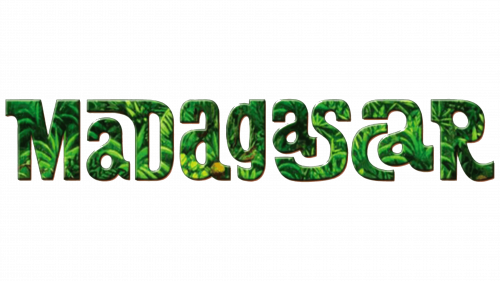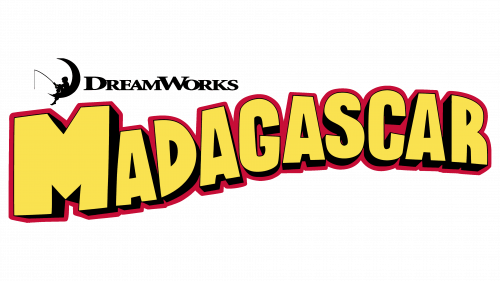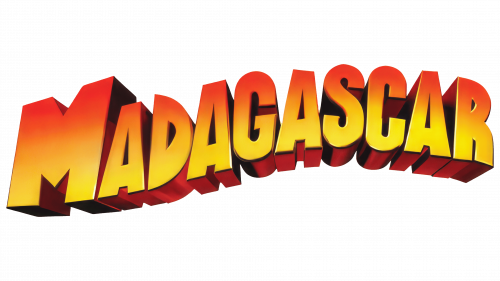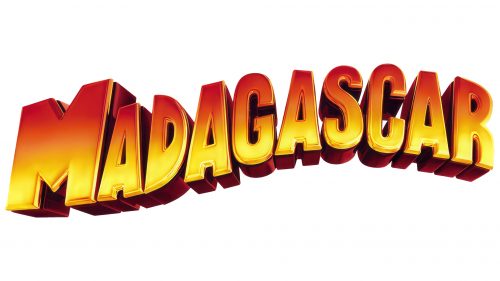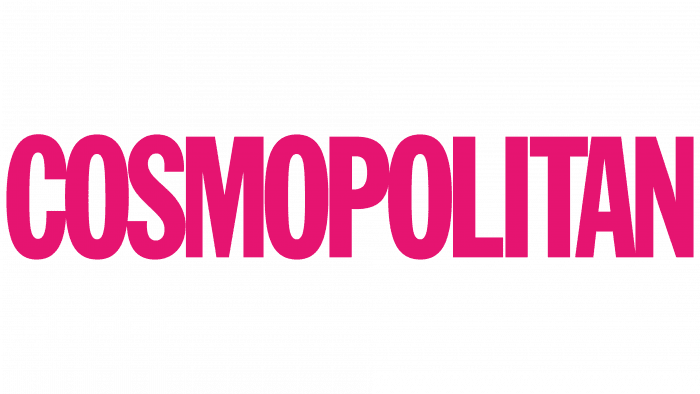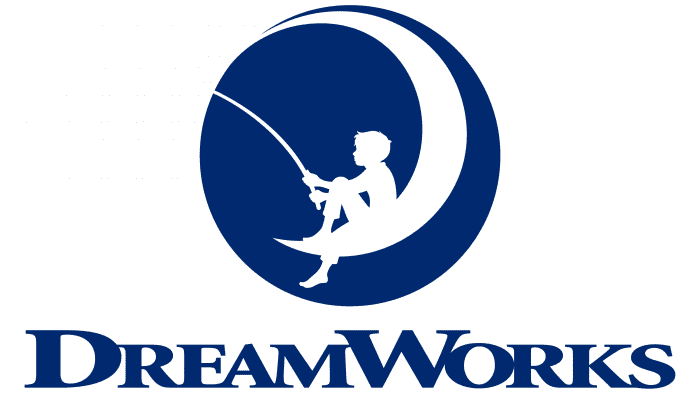The Madagascar logo is cheerful, representing a well-known animated franchise that appeals to children and adults. It playfully conveys adventures, humor, lightness, and the joy of the rich flora and fauna brought to life by the magic of professional animators’ craftsmanship.
Madagascar: Brand overview
The first DreamWorks Animation animated picture was released in 2005, marking the beginning of the Madagascar franchise’s history. The film’s concept, conceived by directors Eric Darnell and Tom McGrath, portrayed a tale of zoo animals who dream of being in the wild.
Development of the movie began in the early 2000s. Despite its animated nature, the creators invested considerable effort researching the region’s characteristics and animal behavior.
On May 27, 2005, the first movie premiered, achieving significant success by earning over $532 million worldwide. As a result, the franchise became one of the most prosperous in the animation sector.
The first movie’s success prompted a swift start to the sequel’s development. 2008 saw the release of Madagascar: Escape 2 Africa, which continued the main characters’ adventure, this time in Africa. The movie was a huge hit, grossing over $603 million globally.
Merry Madagascar, a 2009 short film, expanded the franchise’s universe and allowed fans to see their favorite characters in a festive setting.
Madagascar 3: Europe’s Most Wanted, the third entry in the main series, was released in 2012. This installment took the characters on a journey to Europe and resulted in nearly $746 million in global sales, making it the series’ most successful installment.
A television franchise emerged alongside the original film series. The TV show The Penguins of Madagascar, which followed the exploits of well-known penguin characters, debuted in 2008. The show won multiple accolades, including an Emmy, and aired until 2015.
In 2014, Penguins of Madagascar, a full-length spin-off, enhanced the characters’ backstories and grossed over $373 million globally.
The series aggressively entered the video gaming industry. In 2005, many games based on the movies were created for consoles and mobile devices.
The Penguins of Madagascar television series ran from 2008 until its conclusion in 2015, sustaining interest in the property and winning multiple awards.
A brand-new animated series called All Hail King Julien debuted on Netflix in 2017. It focused on the adventures of the well-known lemur character King Julien before the events of the first movie and expanded the universe until 2020.
The short Madagascar: A Little Wild, produced by DreamWorks Animation, debuted in theaters in 2018 and screened before the main feature How to Train Your Dragon: The Hidden World. This promoted the introduction of new characters and kept fans interested in the franchise.
The mobile game Madagascar: Mad Pursuit was released in 2019, bringing fans back to the worlds of their beloved characters.
A spin-off centered on the penguin population was announced for 2020, starting as a full-length movie for the Peacock streaming service.
News of a potential revival of the main film series surfaced in 2021. Industry whispers suggested the creation of a new feature film aimed at revitalizing the series for a younger audience despite the lack of an official announcement.
The franchise commemorated its 17th anniversary in 2022, developing into one of the most well-known and cherished animated programs, continuing to draw new viewers across various media platforms.
2023 was characterized by ongoing discussions about the franchise’s future. It remained a significant part of DreamWorks Animation’s portfolio, with the firm exploring ways to expand the series.
The series has maintained its position as one of the most popular animated series over the years, captivating audiences of all ages with lively characters, humor, and thrilling escapades. It has significantly impacted animation and emerged as a prominent figure in early 21st-century culture.
Meaning and History
What is Madagascar?
This is an animated cartoon that has won the hearts of viewers around the world with its lively characters and fun adventures. The show follows a group of animals from Central Park who embark on impromptu trips that take them far from their home in New York City. The main characters are Gloria the hippo, Melman the giraffe, Marty the zebra, and Alex the lion. Their vivid personalities create comical and often chaotic situations. Clever dialogue, slapstick, and themes of friendship and self-discovery make the cartoon truly memorable. The franchise has expanded to include short films, TV shows, video games, and theme parks. The expansive universe with notable characters like the crafty penguins and King Julien has brought musical numbers and pop culture references and attracted a wide audience to the animation industry.
2003 – 2004
Before the official release of the animated film about restless animals, the project had a temporary logo that spectacularly represented the world where the main events occurred. Its concept was connected to the jungle, the characters’ natural habitat. Untouched wild forests served as the prototype for Madagascar’s visual identity, adorning the emblem with the freshness of greenery and breathing the free-spirited nature of its anthropomorphic inhabitants into it.
The structure of the logo is playful, resembling a puzzle or Tetris, where each miniature detail is part of a larger picture—cohesive, harmonious, and mysterious. Because of this, the letters are not uniform in size:
- The smallest are the first and third “a” and the “c.”
- The largest are “M,” “D,” and “R.”
- The widest are “S” and the fourth “a.”
- The most unusual is the “D,” with a stroke extending to the left.
Moreover, the glyphs are in different cases: some are uppercase, others are lowercase. “a” appears most frequently among the lowercase, while the rest are mainly uppercase. This makes the inscription feel like a fun game where one must piece together all the elements to form a coherent word. In this case, it has already been assembled—it’s just a matter of recognizing and reading it correctly. The inscription is well “camouflaged,” as the green color effectively masks natural objects.
The impression of the text element is positive: it reveals the multilayered nature of the jungle, where each level has its own life, reflecting the local biodiversity. The letters seem to echo the calls of tropical birds and the rustle of dense foliage. Overall, the colorful and mysterious design attracts the target audience of the animated world—children. The variety of shapes and colors, along with the playful font, hints at the entertaining and humorous nature of the full-length animated film.
Despite the complex structure and varied forms, the glyphs complement each other well, creating a harmonious picture of the wild jungle. Their smooth curves and soft lines blend perfectly with precise angles and straight edges. This contrast maintains the perfect balance, as harmony is organized chaos. Similarly, the seemingly chaotic letters form a unified inscription in this case. They are the foundation of Madagascar’s emblem. Although it was just a prototype, it played an important role in the film’s visual identity, helping to choose the appropriate style.
2005
The new animated film required a new Madagascar logo because a franchise is a franchise, but every animated movie must have its unique face. Yet, parallels between the emblems must also remain so that viewers can immediately understand that the new release is thematically and plot-wise connected to the previous one. The designers considered this and proposed a similar logo style with a personal interpretation. What did they come up with?
As a result of meticulous work, a massive emblem was created, where text dominates once again. There is some graphic content, but it is minimal—serving as a designation of the film’s creator. It features the traditional DreamWorks studio sign: a small fisherman sitting on a crescent moon, holding a fishing rod. The boy watches it closely, afraid to miss the next catch—viewers interested in the company’s creations. Next to him, the studio’s name is indicated in a single word. All elements are colored black so that the studio’s name and symbol remain in the background while the main focus is on the film’s emblem.
By the way, black is actively used in the Madagascar logo: it appears in the main part, adding depth to the glyphs. The sides of the letters and the internal spaces are darkened to create the illusion of three-dimensionality. Thanks to this effect, it feels as if the name emerges from the red background, though the red color, in this case, serves only as a border for the inscription.
The block style does not make the letters strict; on the contrary, they look funny and childlike, which was exactly what the designers intended, as the logo is for an animated film. The chosen font is large, massive, uppercase, and grotesque. The first glyph is the widest of all: it resembles the MTV logo. Both “M” s are so similar that they share matching side shadows and the lower part of the central notch (angle). The other letters are much smaller than the first but are also uppercase.
A wavy horizontal line adds playfulness to the text: the second part of the name is much higher than the first, creating the impression of gentle swaying, like on waves. Combined with the yellow color of the symbols and the red border around them, this generates a joyful mood, as if the emotions from watching the animated film lift the viewers to the sky or plunge them deep into the sea. The impression is generally very positive, vividly conveyed in the Madagascar emblem.
2008
In the logo of this period, text dominates, so there’s nothing else besides it. It is the primary element because it represents the title of the animated film, appears in the credits, and is displayed on posters. It is the heart of the visual identity, as it represents the main setting of the animated film—a tropical island modestly nestled off the southern coast of Africa. This version is characterized by:
- Wavy shape (the curved line rises upward, hinting at an optimistic and joyful conclusion to events);
- Massiveness (due to the large letters, the inscription looks huge—wide and long);
- Blocky glyphs (the font is in uppercase, making all symbols very tall);
- Three-dimensionality (the letters gain depth from shadows, creating an impression that they are raised above the background);
- Cut-off tops (particularly, all “A” s have a flat edge instead of a point).
There remains a similarity between the “M” letters in the word Madagascar and the MTV logo. They are nearly identical: equally geometric, wide, extra-bold, and blocky, with similar massive legs and triangular indentations. The border around the title has disappeared, but a patterned bottom with red half-shadows has been added, giving the text an even greater three-dimensional effect.
The logo now features a gradient that was not present before. The upper part of the line is colored like the morning dawn, while the lower part resembles the noonday sun. This combination reflects the tropical setting where the characters’ adventures occur and suggests that the events are thrilling, emotionally intense, and heated. The color beautifully resonates with the film’s content and subtly supports its concept.
2012
At first glance, this version may seem identical to the previous Madagascar logo, but it’s not. The differences don’t affect the animated film’s style, structure, or idea. The changes mainly focus on the text’s readability, ensuring it’s visible on any device—from home projectors to personal smartphones.
The emblem’s composition remains the same, featuring a wavy inscription arranged horizontally. Designers added more realism, making it seem like the massive three-dimensional letters, connected into a single ribbon, are floating in the air. This impression is reinforced by the detailed rendering of the lower part of the glyphs, where the distinctive border of each symbol is visible, showing either rounded edges or smooth platforms.
The wave-like shape of the text makes the logo genuinely childlike, adding energy, playfulness, and dynamism that brings the static sign to life. The wide and long ribbon of large letters also resembles a classic toy train, considered one of childhood’s delightful symbols. As a result, the visual identity sets a positive tone and creates anticipation for an enjoyable viewing experience.
The letters now have a decorative edge that increases the openings and clarifies the inscription, making the glyphs stand out much more. Despite the narrow spacing between characters, they don’t blend into a single entity and aren’t lost under the layer of the red-yellow gradient, which not only remains but has become more vivid. By the way, the saturated colors convey a high level of excitement in the animated film, set the stage for an emotional experience, and indicate the warm regions where the main events occur.


